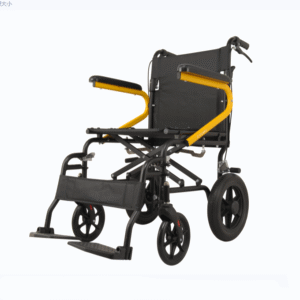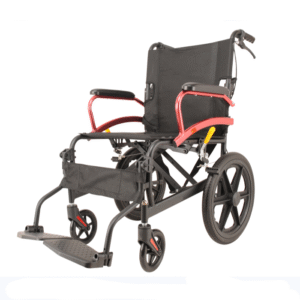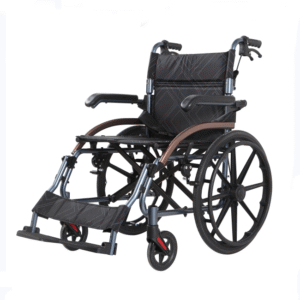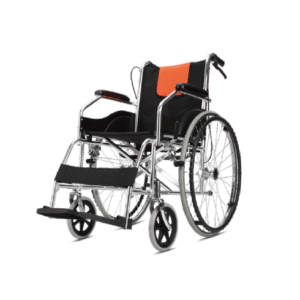Outdoor Wheelchair: Your Comprehensive Guide to Exploring the Outdoors Freely
Exploring the great outdoors is a desire shared by many, but for those with mobility challenges, it can be a difficult task. However, with the development of outdoor wheelchairs, this desire is no longer out of reach. This blog will answer all your questions about outdoor wheelchairs, helping you better understand and use them to enjoy the beauty of nature.
What is an outdoor wheelchair?
An outdoor wheelchair is a specially designed mobility device that enables individuals with limited mobility to navigate various outdoor terrains. It typically features a sturdy frame, large and durable tires, and enhanced suspension systems to handle rough surfaces. Unlike regular wheelchairs, which are mainly designed for indoor use or smooth outdoor paths, outdoor wheelchairs are built to withstand the challenges of different outdoor environments.
What are the differences between outdoor wheelchairs and regular wheelchairs?
- Applicable scenarios: Regular wheelchairs are suitable for indoor environments such as homes, hospitals, and shopping malls, as well as smooth outdoor roads. Outdoor wheelchairs, on the other hand, are specifically designed for outdoor use, capable of handling various complex terrains.
- Structural design: Regular wheelchairs usually have smaller wheels and a relatively simple structure, which are not suitable for rough surfaces. Outdoor wheelchairs have a more robust frame to withstand greater pressure and impact. Their large and wide tires provide better traction and stability on uneven ground. In addition, they often have enhanced suspension systems to reduce the impact of rough terrain on the user.
In which outdoor environments can an outdoor wheelchair be used?
Outdoor wheelchairs are versatile and can be used in a variety of outdoor environments. Parks with gravel paths, grassy areas, and slight slopes are easily accessible. Mountain trails with moderate roughness can also be navigated with the right outdoor wheelchair. Some specially designed models are even suitable for beaches, allowing users to enjoy the sea and sand. Moreover, campgrounds, nature reserves, and rural roads are all within the range of outdoor wheelchairs.
What factors should be considered when choosing an outdoor wheelchair?
- Terrain adaptability: Consider the types of outdoor environments you will mostly be in. If you often go to mountainous areas, choose a model with strong climbing ability and good suspension. For beach trips, a wheelchair with wide tires that can move smoothly on sand is necessary.
- Weight and portability: If you need to transport the wheelchair frequently, its weight and whether it can be folded are important factors. A lightweight and foldable model is more convenient for carrying in a car.
- Comfort: The seat should be comfortable, with good cushioning. Adjustable armrests and footrests can also enhance the user’s comfort during long-term use.
- Durability: The material of the frame and the quality of the tires should be considered. A durable outdoor wheelchair can withstand the wear and tear of outdoor use.
- Braking system: A reliable braking system is crucial for safety, especially when going downhill or stopping on slopes.
How to use an outdoor wheelchair safely?
- Before using, check the wheelchair’s condition, including the tires, brakes, and frame. Ensure all parts are in good working order.
- When going uphill, lean forward slightly to maintain balance. When going downhill, go slowly and keep the brakes ready.
- Avoid sudden turns or stops, especially on rough terrain, to prevent tipping over.
- If you encounter obstacles, such as stones or tree roots, try to go around them. If you have to go over them, do so slowly and carefully.
It’s best to have someone accompany you when using the outdoor wheelchair in unfamiliar or challenging environments.
What maintenance work is needed for an outdoor wheelchair?
- Regularly check the tires for wear and tear, and maintain proper tire pressure. Replace worn tires in a timely manner.
- Clean the wheelchair after each use, especially if it’s been used in muddy or sandy areas. Remove any dirt or debris from the frame, wheels, and other parts.
- Lubricate the moving parts, such as the axles and hinges, to ensure smooth operation.
- Check the brakes regularly to ensure they are functioning properly. Adjust or replace the brake pads when necessary.
- Inspect the frame for cracks or damage. If any damage is found, repair or replace the frame as soon as possible.
With the right outdoor wheelchair and proper knowledge of its use and maintenance, individuals with mobility challenges can freely explore the outdoors and enjoy the wonders of nature. So, don’t let mobility issues hold you back. Get an outdoor wheelchair and start your outdoor adventure!
Thank you for reading this, dear, if you have any suggestions about our website or want to know about wheelchair, please contact us. We will respond quickly.



